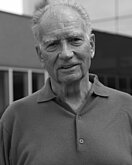
History
In 1990, with the support of the CNRS, Inserm, the Louis Pasteur University of Strasbourg, and the pharmaceutical company Bristol-Myers Squibb, the institute was established on the Innovation Park site in Illkirch-Graffenstaden—a center of excellence dedicated to scientific research and biotechnology.
Since its inauguration in 1994, IGBMC researchers have stood out for the excellence of their work on the international scientific stage.
1994–2002: Under the leadership of Pierre Chambon, IGBMC’s research focused primarily on the regulation of gene expression.
2002–2009: The institute was co-directed by Jean-Louis Mandel and Dino Moras, marking a shift toward new research themes: human genetics and structural biology.
2009–2012: Olivier Pourquié, a specialist in muscle and vertebral development, took over the direction and continued to expand the institute’s scientific focus.
2012–2013: Brigitte Kieffer, renowned for her research on opioid receptors, led the institute during a transitional period.
2014–2020: Two leadership tandems successively guided IGBMC, shaping its major strategic directions:
Bertrand Séraphin (Director) and Yann Hérault (Deputy Director)
Followed by Alain Beretz and Daniel Metzger
2021–2024: The institute was led by Frédéric Dardel. His research focuses on molecularbiology, nuclearmagneticresonance, molecularvirology, and bioinformatics, helping to strengthen IGBMC’s commitment to interdisciplinarity.
Since 2024: Patrick Schultz serves as Director of IGBMC.
Under his leadership, the institute continues to conduct cutting-edge research in six major areas:Integrative structural biology
Developmental biology
Functional genomics
Cancer
Translational medicine
Neurogenetics


